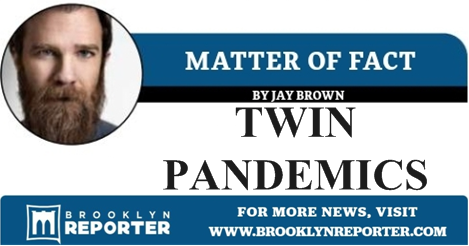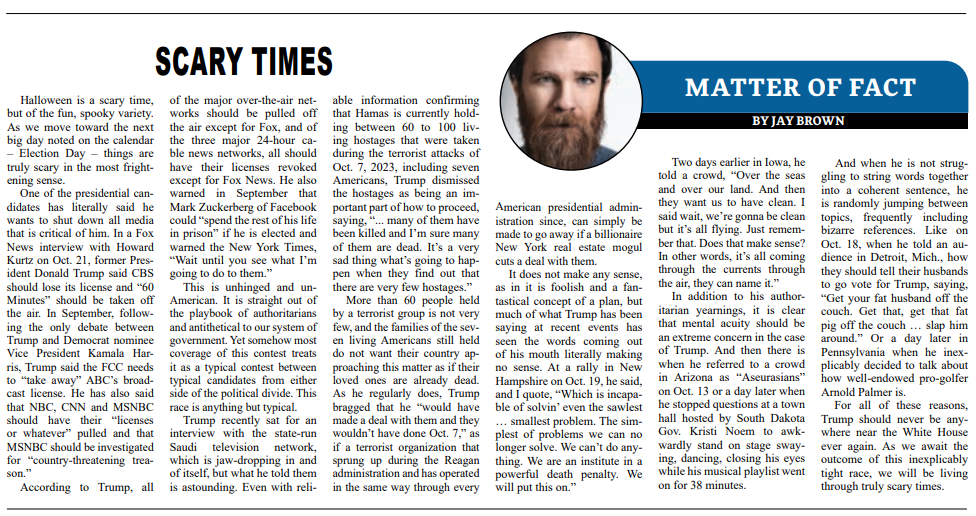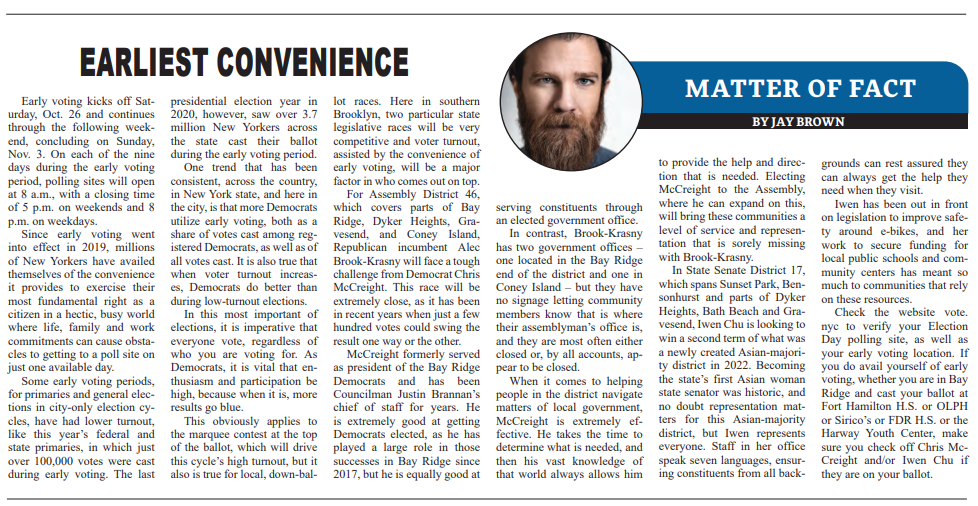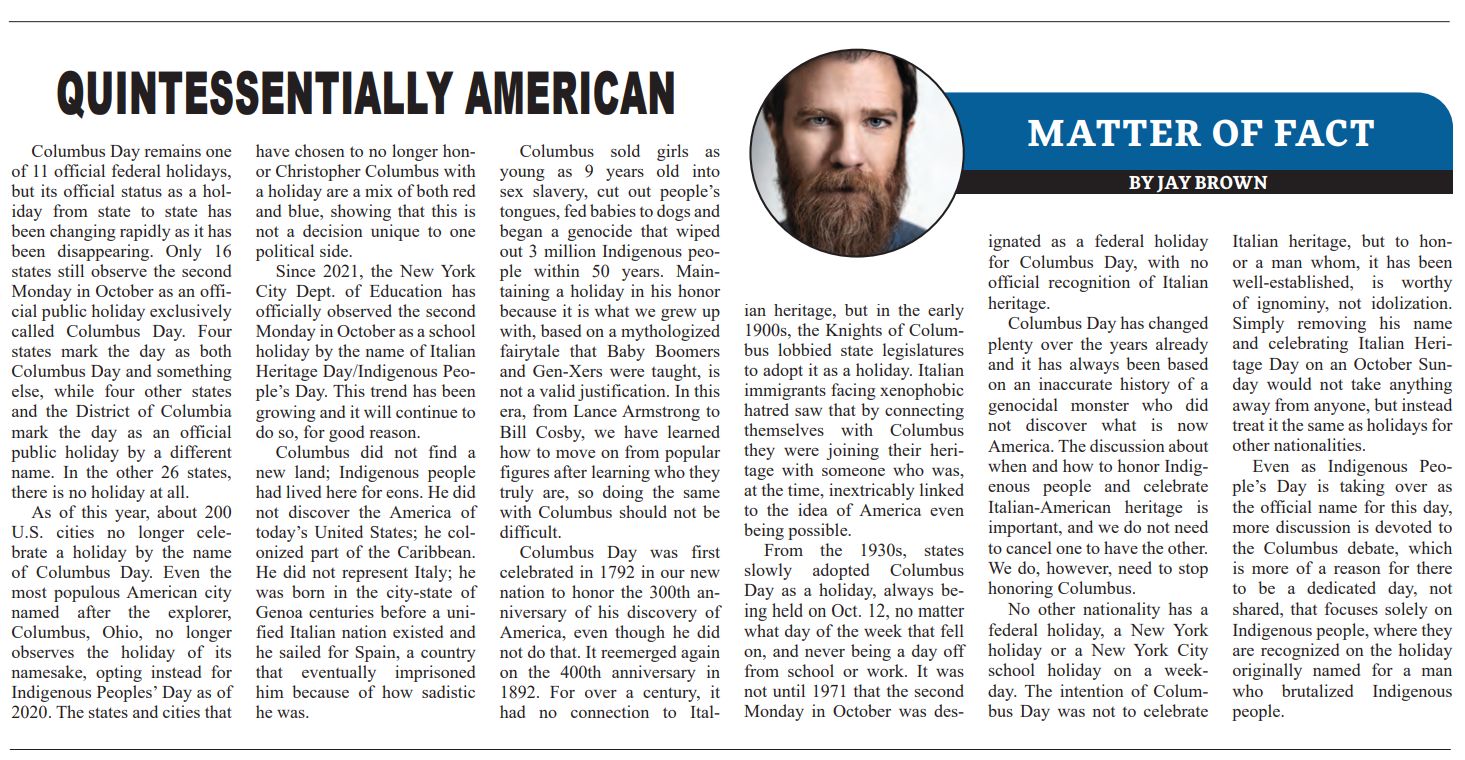This column, from the weekly opinion piece MATTER OF FACT, first appeared on BrooklynReporter.com, the Home Reporter and Spectator dated June 19, 2020
For the past few weeks, America has been consumed with two pandemics. One that we have been dealing with for the past four months. The other, for the past 400 years. Both continue to claim the lives of victims whose last words are often, “I can’t breathe.”
As the weather improves and months of social distancing and isolation continue to wear on people, it becomes more difficult to convince everyone to remain diligent in observing the necessary precautions to prevent the spread of COVID-19. We have come a long way, as evidenced by the fact that lately we have been seeing as few as one-twentieth the number of new cases per day that we were registering two months ago, but the virus has not disappeared.
Coronavirus is on the rise in more than twenty states, more than a dozen of which have been seeing record highs in the first half of June. Overwhelmingly, these are states that opened up much sooner than New York or never implemented restrictions to curb the spread of the pandemic in the first place.

Even at the height of the outbreak here in New York City, when New Yorkers pulled together and endured the difficulties associated with staying apart from one another, any walk along a commercial corridor would reveal the occasional person who was not adhering to any of the required protocols. But those walking on crowded sidewalks or entering stores without a mask and no interest in maintaining six feet separation from others were, by far, the exception.
As it becomes more evident that the situation has, in fact, greatly improved, and New York City continues to move forward with phased reopenings, we need to make sure that mindset doesn’t spread. We need to make sure all our sacrifices were not for naught.
Congregating in large groups outside restaurants with no face coverings may be good for the health of small businesses that have been struggling to stay afloat these past few months, but it will jeopardize public health and, ultimately, could lead to the return of the restrictions we have all been working toward having gradually relaxed.
“America has been consumed with two pandemics. One that we have been dealing with for the past four months. The other, for the past 400 years. Both continue to claim the lives of victims whose last words are often, “I can’t breathe.””
Many have complained about the recent mass protests taking place during the pandemic, while businesses have been forced to keep patrons out for months. Those making such gripes seem to correlate closely with people who have been complaining about pandemic-related restrictions since before racial justice protests erupted and tend to come from people who supported protests in April that were focused on reopening the economy. They also seem to come from people who don’t believe in the cause that recent demonstrators in the streets have been bringing attention to.
The protests that began in the wake of George Floyd’s murder have lasted weeks, but they are completely different than the reopening of businesses. The ability of local stores to stay in business and the larger impacts that has on our economy are in no way insignificant, but this moment in time that has catalyzed a movement for racial justice and equality is a unique historical event.

When businesses are permitted to reopen, the idea will be for them to then stay open. Although the mass protests that have taken place since late May have endured for weeks, nobody expects that they will continue like this in perpetuity.
The pressure they have exerted has already led to reforms in many cities and states, both legislatively and in terms of changes to policing practices in cities across the country. Making progress in reforming a systemic problem like this cannot happen all at once, but there have been steps forward since millions of Americans began making their voices heard.
Protests for racial justice and against police brutality have been absolutely necessary to bring attention to that pandemic and exert force on the system to change. They will recede, but things will not just go back to the way they were, because this illness that infects our society has not been eradicated, just as we can expect to return to some semblance of normal life after flattening the coronavirus curve, but we cannot expect to completely return to how it used to be any time soon.




